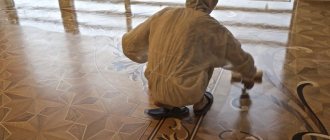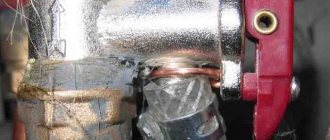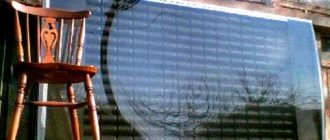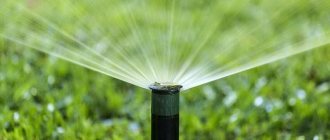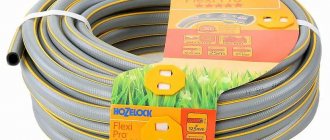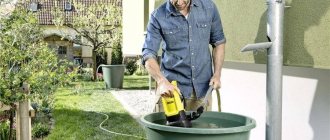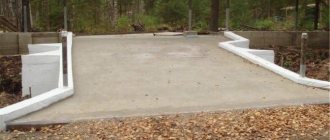Plants need water just as much as people. With insufficient watering, they also experience stress, which slows down growth and disrupts metabolic processes in the stems, leaves and root system. To constantly supply water to the roots in measured quantities, a tape or pipe for drip irrigation is increasingly being used.
In this article, we will look in more detail at the types of this equipment found on the market and the features of choosing the appropriate option.
We will also pay attention to the features of self-assembly of a drip pipeline, and provide recommendations for using the system and its storage in the winter. We will also consider the main problems that most often arise during operation and ways to eliminate them.
Components of drip irrigation systems
The drip irrigation system for plants is not simply connected to a water tap, but has many special components and devices.
The optimal equipment configuration includes the following components:
- Pressure regulating valves. They are located in front of the drip pipes and reduce the water pressure. High pressure can cause tubing damage and uneven watering along its length.
- Filter system. The outlet holes in the pipes are very small, so they easily become clogged with the smallest particles of sand and dirt. Filters are used to prevent clogging.
- Water meter. A device for determining and recording the actual flow rate necessary to calculate the actual water requirement.
- Fertilizer application unit. It consists of a container for mixing fertilizers and pumping equipment that supplies water to the pipe system.
- Controller. A device that regulates the operation of a water meter and pumping equipment. Serves to regulate the volume and time of watering.
- A system of main pipes supplying water to the irrigated area.
- Drip pipes and droppers. Devices that directly distribute water.
Due to the maintenance and setup requirements of drip irrigation systems, their cost is largely determined by the price of additional equipment. It often costs much more than the polyethylene pipes themselves, so when choosing an irrigation system, the financial factor should be taken into account.
There are drip irrigation systems for both unpretentious grass lawns and half-kilometer industrial greenhouses. You can invest in any budget
Where and approximately at what cost are they sold?
Pipes for drip irrigation can be purchased at any organization that deals with water supply systems, a hardware store, or an online store.
Examples:
- HDPE pipe 32 mm. Price 50 rubles.
- HDPE pipe 25 mm. Price 40 rubles.
- HDPE pipe 16 mm. Price 30 rubles.
The price of HDPE pipes depends on its diameter.
Classification and application of drip pipes
Drip pipes, unlike tapes, are guaranteed to last 5-6 seasons, so their use is effective when growing perennial plants and trees. Due to the wide variety of designs and types of pipes for drip irrigation, it is worthwhile to dwell in more detail on the areas of application and selection of this or that type of equipment.
Most drip pipes on the market have an outer diameter of 16 mm, although products are sold in 12 and 20 mm thicknesses.
Otherwise, drip systems can be divided according to the following functional and structural differences:
- by pressure uniformity in the pipe;
- by type of dropper;
- one step at a time between droppers;
- by the location of the equipment relative to the ground;
- by the presence of holes for droppers;
- by water consumption.
Next, we will consider the classification of drip tubes according to the listed characteristics.
Criterion #1 - pressure uniformity in the pipe
According to the uniformity of pressure distribution, the tubes are divided into:
- Compensated . The flow rate of outgoing water at the end and beginning of the tube remains unchanged and does not depend on the pressure.
- Not compensated . The water flow varies depending on the pressure applied at the beginning of the hose.
- Adjustable.
It makes sense to buy compensated pipes when the length of irrigation lines is more than 20 meters and at a minimum operating pressure of at least 1 atm. For Spanish drippers, the opening threshold is 0.3 atm, for Israeli ones - 1 atm, that is, at lower pressure, water simply will not leave the system. We talked about ways to increase pressure in the system here.
And with a short length of pipes, watering will be uniform along the entire length.
Under the pressure of water, the silicone membrane opens the outlet for water to the outside. The disadvantage of the scheme is the presence of a minimum threshold pressure at which watering is possible
Uncompensated and adjustable drippers can operate at any pressure and even in gravity systems. Adjustable pipes require initial fine adjustment, which is time consuming.
Criterion #2 - type of dropper
Pipes may have the following types of droppers:
- rigid, in the form of an elastic tube;
- soft, in the form of a tape;
- built into the wall.
Pipes with built-in drippers are used mainly in dense gardens, artificial landscapes and shrubs, where the poured water will be available to the root system anywhere.
Built-in drippers with labyrinth compensators are prone to clogging with mechanical impurities, and therefore require careful water purification using filters
Drip hoses with built-in external drippers are used for watering plants in the following areas:
- ornamental plant growing;
- hydroponic systems;
- industrial berry orchards;
- nurseries.
They can also be found in vertical gardening systems.
The holes for the droppers are quite large and practically do not become clogged, and the tubes themselves are easy to rinse, removing sand
Drippers allow you to supply water to each root separately.
Criterion #3 - step between droppers
The pitch between the emitters in the drip tubes must be selected based on the crops being grown. There is no need to buy equipment without a clear understanding of the list of plants that it will water.
Pipes can have the following pitch between emitters:
- 10-20 cm - installed when irrigating grass lawns, onions, garlic, parsley, lettuce, etc., used on sandy soils when high water consumption or linear watering is required.
- 30 cm - used for irrigating potatoes, strawberries, cucumbers, peppers.
- 40 cm or more (up to 150 cm) - used for irrigating tomatoes, pumpkins, zucchini, watermelons.
The latter species is often used in a nesting scheme for planting shrubs.
It must be remembered that water flow for drip pipes is indicated per hole, and not for the entire length as a whole.
If there is no planting plan, then it is best to buy a blind pipe and subsequently determine the insertion locations for the droppers yourself. In addition, reducing the pitch between emitters leads to higher equipment costs.
Criterion #4 - equipment location relative to the ground
Based on their location relative to the soil, pipes are divided into:
- superficial;
- subsoil.
Pipes laid underground have a special design that prevents them from quickly becoming clogged with earth.
They are used in the following cases:
- It is necessary to hide watering for aesthetic beauty.
- There is a possibility of pipe theft.
- In artificial landscape systems.
They are also relevant for preventing damage from machinery during land cultivation.
To make the drip holes less clogged, the pipe can be lined with medium crushed stone. This will additionally prevent plant roots from growing into the system.
Installing an underground system requires additional labor and financial costs.
Criterion #5 - presence of holes in pipes
According to the presence of special places for connecting droppers, pipes are divided into:
- blind ones are solid pipes in which holes for droppers can be made independently in any place;
- emitter , with built-in outlets.
Both types are actively used.
When purchasing a blind drip pipe, you must purchase a special metal tip to form holes for external droppers
Blind drippers are convenient for watering chaotically located berry bushes and artificial landscape elements. Using a drill or a tip, you can always make a hole in them in the right places and insert a drip tube into it. There are plugs to plug extra holes.
Criterion #6 - water consumption
There is no clear division of drip pipes in terms of water flow, but for each product this parameter is specified in the instructions.
Equipment with different capacities has its own areas of application.
- Emitters with a water flow rate of 2-4 l/hour are installed on beds that require double-sided watering from one hose, as well as on sandy soils with high absorbency.
- Water in an amount of 1-1.5 l/hour is enough for most grass lawns and vegetable crops.
- Low flow rate of 0.6-1 l/hour is used on long irrigation lines and clay soils. With such pressure, good water filtration is required, otherwise the pipes may become clogged.
If desired, the water flow can be adjusted.
In uncompensated pipes, water flow is affected by the pressure value, so the volume of irrigation at the end will be lower than at the beginning
Before choosing pipes for drip irrigation, consultation with specialists is required in order to purchase exactly the equipment that matches the existing conditions and plants.
Video description
Video about the device of drip irrigation from bottles:
Any of these methods allows you not only to water the plants, but also to feed them - just add liquid or dissolved fertilizer, herbal infusion, mullein infusion, etc. to the water.
Unfortunately, such a system cannot be called perfect, because you still have to fill the containers often and with your own hands. In addition, in extreme heat and when the owners are absent from the dacha for several days, the bottles will not cope with the task of proper watering. And their appearance will not decorate the site in any way.
Recommendations for using drip systems
There are time-tested recommendations for the use of drip pipelines that increase their efficiency.
- It is best to add fertilizers and bioadditives to the soil by dissolving them in water supplied through a drip system.
- Watering should begin 2 hours after sunrise, and end 2 hours before sunset.
- The optimal water temperature for irrigation is 20-23 degrees.
- You cannot immediately supply cold water after the supply of warm water has been exhausted.
- In a gravity system, the water tank should be at least 1 meter from the ground.
- It is necessary to ensure that the diameter of the wet spots around each dropper is uniform. Their increase or decrease may indicate, respectively, a rupture or clogging of the pipeline.
If it is impossible to water during the day, it is recommended to give the plants 2/3 of the daily water requirement in the morning, and 1/3 in the evening.
In greenhouses, it is better to place the storage tank indoors - there it heats up faster and maintains the water temperature longer
Proper watering saves water and guarantees a high yield and beautiful lawn.
Video description
Useful video on the topic:
See also: Catalog of companies that specialize in the installation of metal structures - canopies, greenhouses and others
Timers can operate from mains or batteries, be mechanical, electro-mechanical or electronic:
- The mechanical timer is manually controlled and has only one function. Before you start watering, you need to turn it on and set the time after which it will stop supplying water. This device is convenient if the area is small and is under constant supervision. It eliminates the need to turn off the water on time and generally keep this concern in mind.
- The electronic-mechanical device can already do more: it provides the specified frequency and duration of watering, independently controlling the system in accordance with the program.
Electronic-mechanical timer with output to two lines Source growsvet.ru
- Electronic controllers are capable of executing up to 16 commands when connecting to them additional devices that monitor soil and air humidity, temperature and other environmental parameters. They can be programmed to different modes for each crop. They are expensive, but they allow you to not have to worry about watering at all, no matter what the weather is like outside and no matter how long the owners’ absence.
When deciding how to make automatic watering in a greenhouse with your own hands, you need to decide in advance on the optimal irrigation mode and choose the most suitable timer in terms of price and functionality. It is installed at the beginning of the system on the main line and does not particularly complicate the process of its assembly.
Electronic timer connected to the central water supply Source treetrekkers.com
Pipe problems and their elimination
The effectiveness of drip pipes is highly dependent on operating conditions. The equipment can last a month, or maybe five years - it all depends on following the basic rules of its use.
The main causes of problems with drip pipes are:
- clogging;
- root germination;
- improper storage during the off-season.
Next, the listed problems will be considered in more detail, and options for their prevention will also be proposed.
Clogging and flushing the system
Country irrigation is often carried out with water from a well or natural reservoirs, so periodic clogging of pipes is understandable.
To purify groundwater, a mesh filter will be sufficient, but when watering from reservoirs, you need to install an additional disk filter device. In the absence of preliminary cleaning, clogging of the droppers can occur within a few days.
Regardless of the presence of filters, drip pipes must be regularly cleaned of mechanical sediment using water pressure. To do this, you need to open the far end of the pipeline and supply water to the system at a speed of 6-7 l/min. Washing continues until the sediment is completely cleared.
You can make a clogged hole in the dropper using a regular foot-operated car pump. It is enough to place the pump hose to the hole in the empty pipe and pump sharply
Elimination of bacterial mucus from the system is carried out by flushing with a 0.5% sodium hypochlorite solution. It is necessary to fill the system with the mixture and leave for 12 hours. After this, drain the chlorine liquid and rinse the pipeline with clean water for 10 minutes.
As contamination occurs, the drip system is also cleaned of salt deposits with 0.6% nitric, orthophosphoric or perchloric acid. The water used should be as warm as possible. The pipeline is washed with an acid solution for 50-60 minutes. After the procedure, you should rinse the system with clean water for half an hour.
Preventing roots from growing into pipes
Drip systems with round holes for water outlet are most susceptible to germination. The more moisture deficit plants experience, the stronger their roots are drawn to its source. Therefore, the basis for preventing root germination is sufficient watering.
Additionally, you can periodically move the pipes a few centimeters to the side so that the roots do not concentrate near the droppers.
The germination of plant roots into the holes of drip pipes in compact closed soils is especially important. In such cases, it is recommended to periodically change the location of the water supply rod
If the problem cannot be solved by these methods, then it is possible to use special chemicals that inhibit the growth of the root system. But it is recommended to use them carefully so as not to destroy the plants being grown.
Storing pipes in winter
You need to plan cleaning of the drip line in advance so that unexpected cold does not freeze the water in the system and damage the pipes.
Winding pipes onto a drum is an ideal option for long-term storage: hoses and built-in emitters are not crushed, and the roll can be easily protected from rodents
Before cleaning the pipeline for the winter, it is necessary to clean it of mechanical sediment, mucus and lime deposits. You need to wind up the drip system slowly, raising the hoses high to drain the water. Rolls should be stored in a dry place, preventing the entry of rodents that can chew on the equipment.
Compliance with these rules will allow you to operate drip pipes without problems during the entire warranty period.
Laying process
When constructing your own garden watering from plastic or metal pipes, you should adhere to a certain algorithm.
- Draw on paper a pipeline laying diagram, mark the locations of the sprinklers so that the entire area is covered.
- Taking into account the number and location of sprinklers (sprinklers), possible hydraulic losses, select a pump of the required power and a water container.
- Mark the site according to the paper version of the project plan.
Important! When marking the lawn, you need to accurately place the sprinkler mounting points to avoid double watering of individual areas.
- Use a spatula to dig trenches measuring 22-30 cm into which the pipes will be laid. If there is a lawn, carefully place the soil on polyethylene.
- Assemble valve boxes, sprinkler units, pump with container.
- Using fittings, connect all nodes with pipes into a single system.
- Lay the electrical cable and connect it to the remote control.
- Launch and adjust the automatic irrigation structure. Make sure that all areas of the site are watered and that there are no overlays.
Farmer-2
This model is considered the best in terms of the set, which includes all the necessary parts and accessories. The device is manufactured in Ukraine and has been on the demand market for quite some time. The model is suitable for irrigation of an area of 20 square meters. All parts are UV resistant and can withstand water pressure up to 1.1 bar.
Pros:
- Good set of components;
- Affordable price;
- Good quality;
- Easy installation;
- Resistance of parts and housing to ultraviolet radiation.
Features of metal water pipes
Products made from polymer compounds are now used everywhere. This material does not rust, is cheap and easy to install. But metal has not yet been written off either.
At domestic dachas you can find a lot of metal water pipes used for watering plantings on the site. In many ways, this is a legacy of the Soviet era, when polymer pipes simply did not exist. However, not everything is so simple; metal has a lot of advantages.
Owners of summer cottages prefer to install irrigation using metal pipes because of their durability and strength - if you accidentally step on them, they will definitely not break
Among the advantages of metal irrigation pipes are:
- resistance to fractures;
- frost resistance;
- long service life of 20–30 years;
- high mechanical strength.
Metal water conduits can be safely laid under pedestrian paths and areas near the garage where vehicles are parked. They will not break under pressure from above. They may bend, but will not break.
Polymer products are unlikely to withstand such loads. Polymer pipes are too fragile compared to rolled metal pipes. And in winter, it is better not to use water pipes assembled from them without insulation outdoors at all.
Metal pipes for organizing irrigation in the country are made from suitable materials:
- become;
- galvanized steel;
- copper
The main disadvantage of the first option is its high susceptibility to corrosion. When a steel pipeline is in the ground, it quickly begins to rust, inside and out. The use of galvanized stainless steel with greater corrosion resistance allows you to extend the service life of such a water pipeline, but leads to its significant increase in cost.
Image gallery
Photo from
Stationary country pipeline
Connecting hoses to metal pipes
Combination of metal and polymer pipe
Shut-off valves for metal pipes
Copper pipes are not susceptible to rust, but they cost a lot. Plus, we must not forget about the problem of theft. Not all holiday villages are protected. And copper is a desirable prey for uninvited visitors who visit other people’s empty dachas in winter with the aim of stealing. It will always be in price at scrap metal purchasing bases.
Compared to their plastic counterparts, metal pipes are expensive, heavy and more difficult to install, but if they are not stolen, they will last much longer than their counterparts
Often the irrigation system is installed in the ground. Digging it up for the winter means loading yourself with additional work. Usually it is preserved and remains in the ground. But plastic becomes brittle in cold weather, which often leads to its destruction.
And steel and copper can easily withstand negative temperatures. Pipes made from them can be safely left in the ground for the winter. You just need to drain the water from them before it gets cold.
The following article will introduce you to the markings and assortment of fittings for connecting steel pipes, which we recommend reading.
DIY dropper
Before you start assembling the entire structure, you need to decide on the general scheme. The easiest way would be to sketch this diagram on a separate sheet, indicating all the wiring elements on the site. There you also need to indicate each distance, each dropper and the place where the water container is supposed to be located (or another source from which it will come).
IMPORTANT! You can avoid unnecessary expenses on pumping equipment if you try to place the liquid container as close as possible to the irrigated beds. And it is worth remembering that the container must be installed at a height of at least one meter!
Next, you need to decide on the mechanism (pump) for supplying/absorbing water. It can be superficial or submersible.
Surface – perfect for a storage source. This device is small in size, weighs little and takes up little space. In addition, the noise level during its operation is quite low, so it will not create discomfort either for the owner of the site or his neighbors. At the same time, using this unit it is quite possible to correctly regulate the pressure force. However, you must constantly ensure that large particles of sand, dirt or debris do not enter the device.
Submersible - the choice in favor of this sample is worth making if you intend to use an external reservoir as a source of water, and it is located not far from the garden plot. The same will apply to the situation when water has to be taken from a well. It should be noted right away that the pump will operate quite loudly, and if the water in the source has foreign impurities, then it is better to immediately consider a model with a drainage effect (they can even have their own grinders installed, so even fairly large debris will not become a hindrance).
